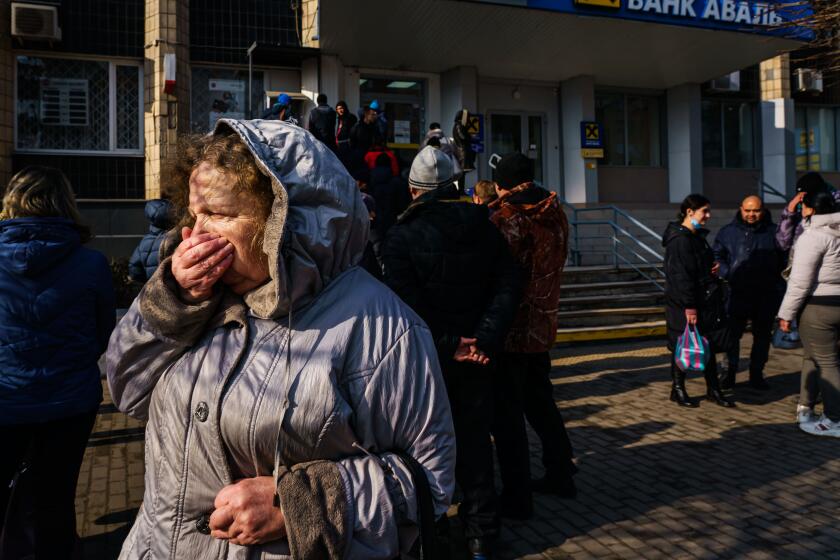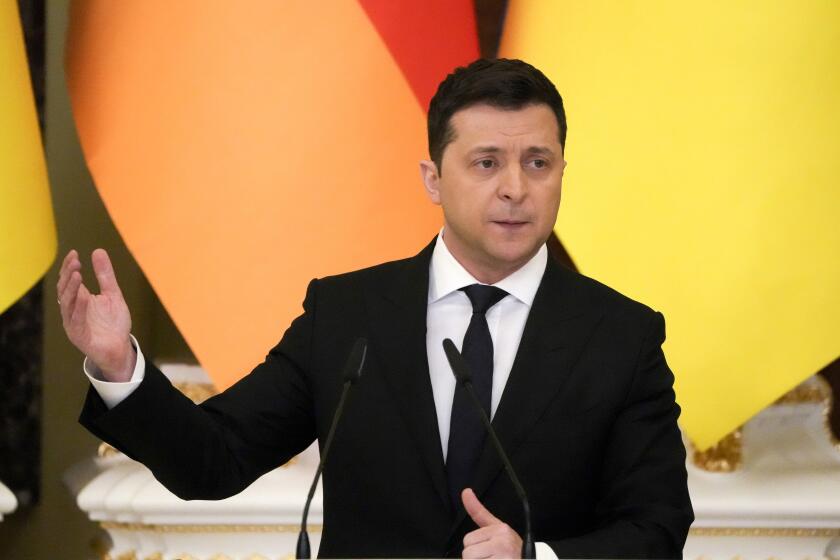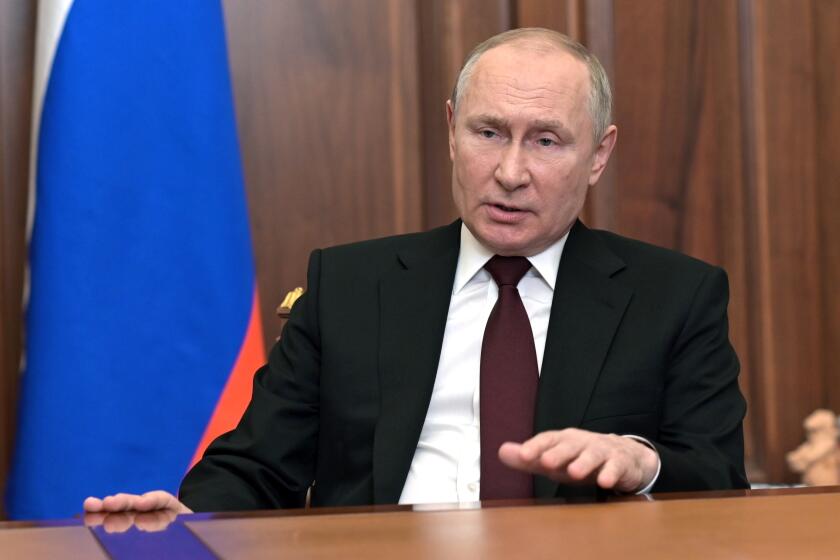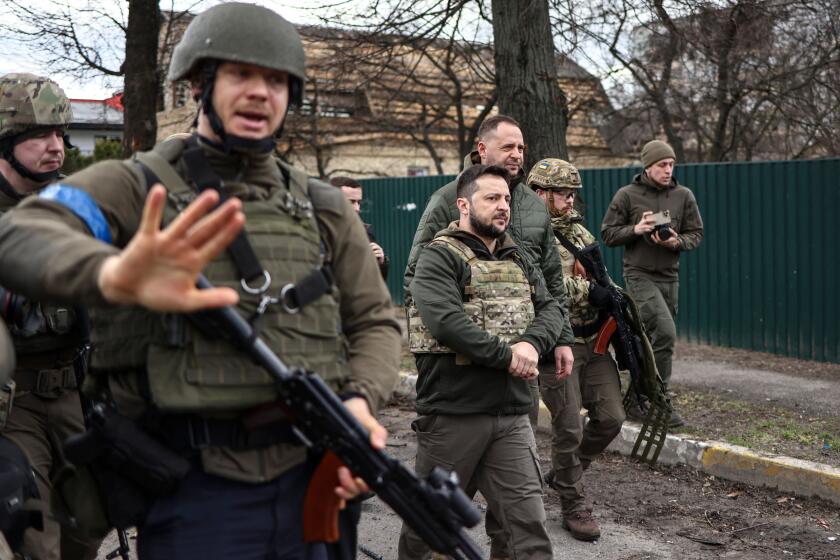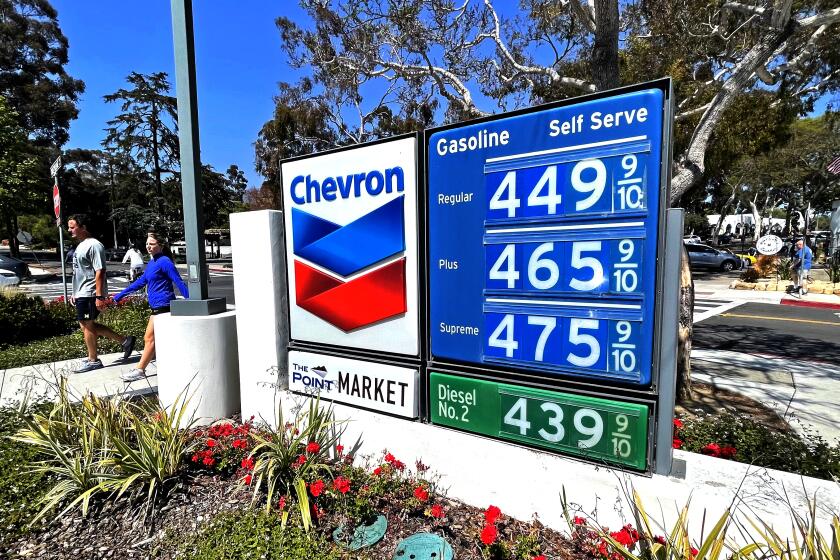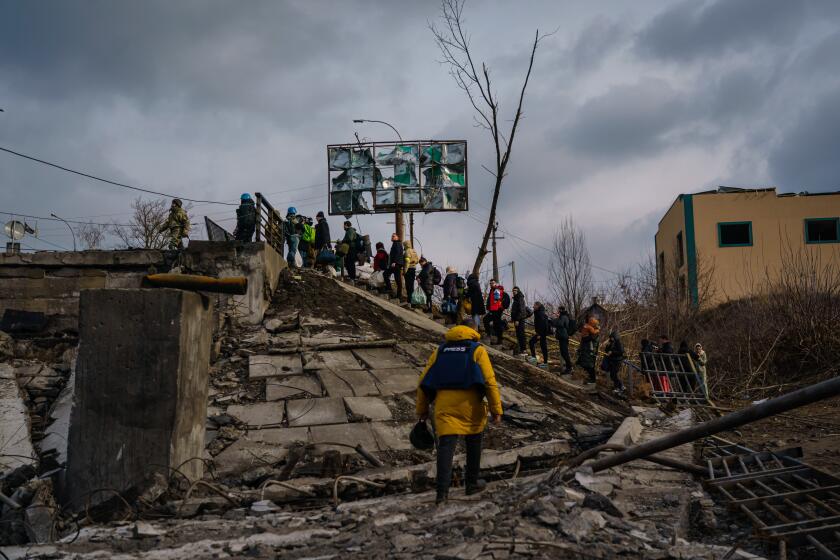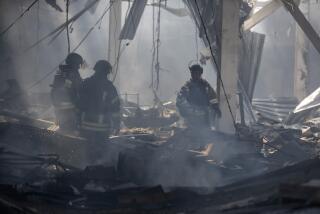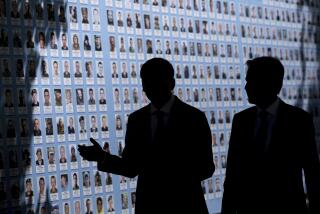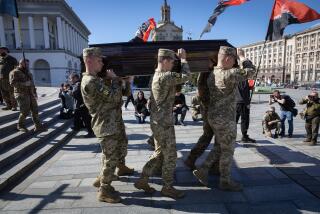Why is Russia attacking Ukraine? Five things you need to know
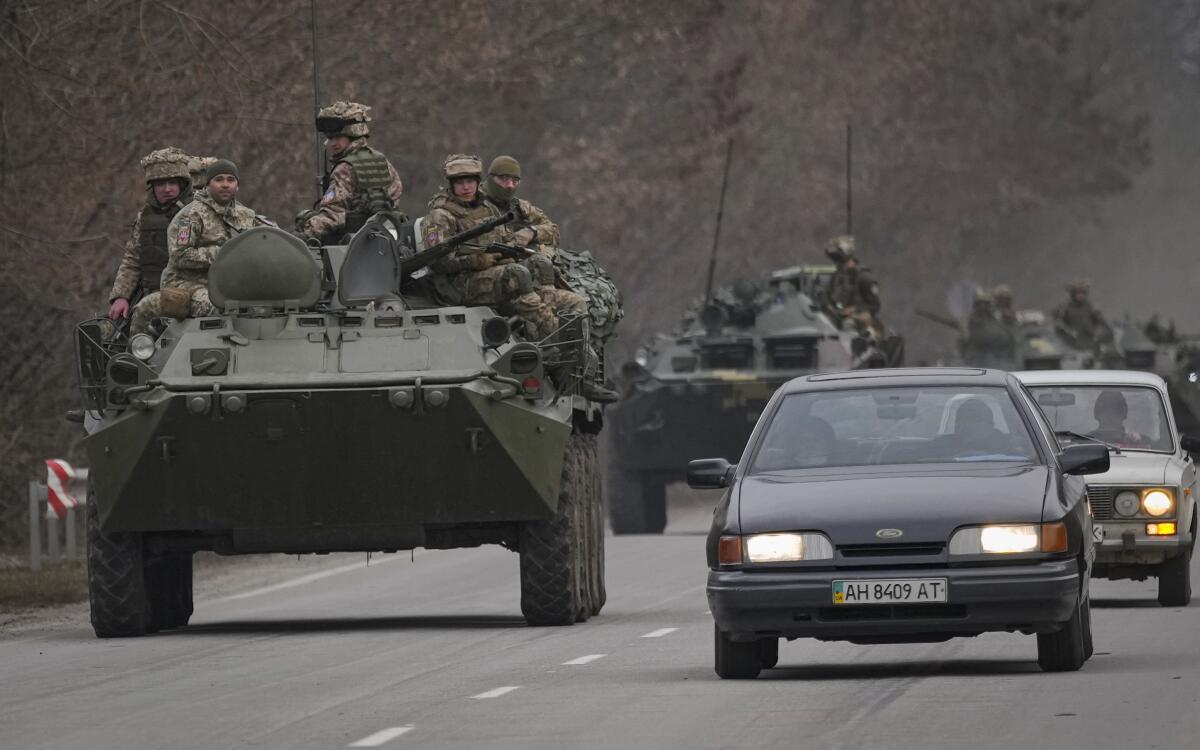
Europe is facing its greatest security crisis in decades after Russia launched a full-scale invasion of Ukraine on Thursday. The conflict is threatening to destabilize regional political and military alliances and sparking fears that U.S. troops could be drawn into the fighting.
What’s happening in Ukraine?
Russia’s attack Thursday, which included airstrikes and shelling, sent civilians fleeing for shelter abroad or in subway stations.
Ukraine’s government said Russian tanks and troops had crossed the border from the east, north and south in a “full-scale war.” Ukrainian authorities described ground invasions in multiple regions. Border guards released images showing Russian military vehicles crossing into territory held by the Ukrainian government. European authorities declared the country’s airspace an active conflict zone.
President Vladimir Putin proceeded with the attack despite condemnation and sanctions from the U.S. and other world powers, referring to Russia’s nuclear arsenal and threatening “consequences you have never seen” for any country that attempts to interfere.
Russia pressed ahead with its assault on neighboring Ukraine on Thursday, with explosions resounding in cities across the country, airstrikes crippling its defenses and reports of troops crossing the border by land and sea.Map: Tracking the invasion of Ukraine | How to help: California organizations supporting Ukraine | What our foreign correspondents are seeing in Ukraine | Photos: Invasion of Ukraine begins
Russian forces on Thursday seized the Chernobyl nuclear plant, site of the world’s worst nuclear disaster in 1986, triggering fears of contamination. Ukrainian troops defended a strategic airport outside Kyiv, the capital. Satellite images from U.S.-based Planet show a dark plume of smoke rising from Chuhuiv air base outside the northeastern city of Kharkiv, which was reportedly struck by a missile.
Residents reported large explosions in Kyiv and other Ukrainian cities. Some fled to neighboring countries by car, while others hid underground in train stations.
Ukrainian President Volodymyr Zelensky cut diplomatic ties with Moscow and declared martial law on Thursday.
“As of today, our countries are on different sides of world history,” Zelensky tweeted. “Russia has embarked on a path of evil, but Ukraine is defending itself and won’t give up its freedom.”
His advisor Mykhailo Podolyak said: “A full-scale war in Europe has begun. ... Russia is not only attacking Ukraine, but the rules of normal life in the modern world.”
How has President Biden responded?
In a televised address Thursday, President Biden imposed more sanctions on Russia and condemned Putin’s attack.
“Putin is the aggressor,” Biden said. “Putin chose this war, and now he and his country will bear the consequences.”
Under the latest sanctions the U.S. and its allies will block the assets of four large Russian banks, impose export controls and sanction oligarchs. Biden also said the U.S. will deploy added forces to Germany to support the North Atlantic Treaty Organization.
As Russia moves ahead with its invasion of Ukraine, eyes are on Volodymyr Zelensky, who was elected in 2019 after finding fame as a comedian.
The sanctions are designed to target Russia’s financial system and industries dependent on U.S. semiconductors and other high-tech supplies.
Biden spoke from the White House hours after holding a virtual meeting with the leaders of Britain, Canada, France, Italy and Japan. Also in attendance were European Commission President Ursula von der Leyen, European Council President Charles Michel and NATO Secretary General Jens Stoltenberg. Biden also met with his national security team to discuss the crisis.
Ukrainian officials responded to Biden’s address by calling for more drastic action, including cutting Russians off from the SWIFT
banking system.
“We demand the disconnection of Russia from SWIFT, the introduction of a no-fly zone over Ukraine and other effective steps to stop the aggressor,” Zelensky said in a tweet.
Russian President Vladimir Putin needs the former Soviet republic Ukraine for his dream of returning superpower days.
The Biden administration has so far refused to block Russia from SWIFT, due to the potential spiraling economic impact on other countries, including Europe.
“It is always an option, but right now that’s not the position that the rest of Europe wishes to take,” the president said Thursday.
Biden noted the Russian stock market and ruble had already plunged, and insisted the sanctions he’d announced would be effective, hobbling the Russian economy and military. He said he had “no plans” to speak with Putin.
How do the Russian and Ukrainian militaries compare?
The Russian military has far more troops, modern equipment and technology than its Ukrainian counterpart: 280,000 regular forces, plus allied separatist militias in the eastern cities of Donetsk and Luhansk, compared with 145,000 Ukrainian troops, according to the International Institute for Strategic Studies. Russia has three times as many tanks as Ukraine, four times as many military fighting vehicles, but both sides have a cadre of ballistic missiles.
A woman reacts as she stands in front of a house burning after being shelled in the city of Irpin.
What role will U.S. troops play?
The Biden administration has repeatedly said U.S. troops will not fight in Ukraine or rescue Americans trapped there, but Russia’s invasion is shaping up to be the biggest land war in Europe since World War II.
On Thursday, the Pentagon said it was sending an additional 7,000 troops to Europe, deploying an armored brigade combat team to Germany to reassure NATO allies. The deployment brings the number of U.S. troops ordered to Europe since the Ukraine crisis began to 14,000; the number of American troops in Europe has swelled to 100,000.
Many of the U.S. soldiers deploying from Fort Campbell, Ky., and Fort Bragg, N.C., have been sent to Poland to help process people fleeing Ukraine, an Army spokesman said Thursday. U.S. troops have been working with Polish forces to set up three processing centers near the Ukrainian border to help tens of thousands of people expected to flee, including Americans.
Will gas and food prices continue to rise? How might the conflict in Eastern Europe affect Silicon Valley and Hollywood?
Ukraine has a population of about 43 million. U.S. officials speculated the Russian attack could kill tens of thousands and create up to 5 million refugees, many in Poland, the largest refugee resettlement in Europe since 2015.
The Pentagon has been repositioning forces in allied Eastern European countries for weeks, shifting those already on the continent to former Soviet states. Biden said this week that he had authorized moving U.S. forces and equipment already stationed in Europe to Estonia, Latvia and Lithuania — countries along Russia’s western border that are among the 30 members of NATO.
Moscow has repeatedly sought to deter Ukraine from becoming a NATO member in recent years to limit Western influence in the region. In light of the Russian attack, NATO has raised the readiness of its rapid response force. Member countries put troops on standby and deployed battalions, planes and ships to the region.
On Thursday, Stoltenberg called the attack a “grave breach of international law, and a serious threat to Euro-Atlantic security.”
What does Putin want?
“Ukraine is not just a neighboring country for us. It is an inalienable part of our own history, culture and spiritual space,” Putin said in a televised speech Monday.
Ukraine is a former Soviet Union republic perched at the edge of Europe. It became independent after the communist government collapsed in 1991. Ukraine is the largest, most fertile, mineral-rich and strategically important. A Russian gas pipeline crosses Ukraine to Europe, generating profits for Moscow.
Putin said in a televised speech Thursday that he considers the prospect of Ukraine joining NATO a “hostile act.”
Times staffers Nabih Bulos and Marcus Yam are on the ground in Ukraine covering the invasion by Russia. Here’s what they are seeing firsthand.
He has also referred to Russians and Ukrainians as “one people,” suggesting Ukraine was a false communist construct that the West corrupted through a “forced change of identity.” Putin views Ukraine as part of Russia culturally, linguistically and politically. Although some of the mostly Russian-speaking population in Ukraine’s east sympathize, the Ukrainian speakers in the west historically sided with Europe.
This isn’t the first time Putin has used military force to push back against NATO expansion and protect Russian economic interests in the region.
In 2008, Russia invaded Georgia and — as it has in Ukraine — accused its forces of attacking pro-Russia breakaway enclaves such as South Ossetia. France negotiated a cease-fire that ended most fighting, but Georgia did not regain the disputed territory.
In early 2014, mass protests in Kyiv forced out a Russia-friendly president after he refused to sign an association agreement with the European Union. Putin responded by annexing the Crimean peninsula in southern Ukraine and fomenting a separatist rebellion in Ukraine’s east, which seized control of part of the Donbas region.
Despite a cease-fire agreement the following year, fighting has continued. Nearly 14,000 people have died and 1.5 million have been displaced, according to the Ukrainian government.
The latest Russian assault came days after Putin announced that Moscow would officially recognize the self-declared Donetsk and Luhansk People’s Republics in eastern Ukraine’s Donbas region, deploying Russian troops to areas that extended beyond those controlled by pro-Russia separatists.
More to Read
Sign up for Essential California
The most important California stories and recommendations in your inbox every morning.
You may occasionally receive promotional content from the Los Angeles Times.

